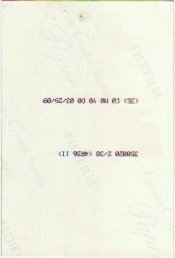I am puzzled by the repeated use of the term "no corrections".
When a print is made from a color negative, the reddish mask must be removed by your printing system, whether printed by an enlarger, or scanned and then printed, to get something that is even close to reality, as the print would be way off in color if the mask is not somehow corrected for. To get a print that is acceptable to the printer's eye, additional adjustments are also made. In general this happens with all color negatve printing and my point here is that printing with "no corrections" is meaningless, as a lot of correction always has to occur to color balance a print from a color negative.
I have operated a minilab machine and the machine always made it's own "corrections" after analyzing the film, then the operator would examine the resulting print and then make further corrections if needed, which was nearly all the time, as the machine would only get you in the ball park. Comparing the back of your print with my machine's, all the zeros likely mean the the operator has made no correction, but the print itself is the machine's correction. If there were other numbers instead of zeros, this would indicate the operator made some additional correction to the machine's. The bottom line here is that you are always getting prints with corrections made, at least the machine's corrections, which are more or less arbitrary. Zeros on the back of the print does not mean no correction! And if you think the zeros mean you are seeing what you shot, you are not. You are seeing what the machine thought you should see.
If you want to get an idea of how your different shots compare you could select a negative that appears well exposed, make an acceptable print from it, then use those same color and density settings to print all your other shots. This way, lighter ones would remain lighter, darker would remain darker, color shifts would be seen, etc, and you would have a good idea of what you have done.












